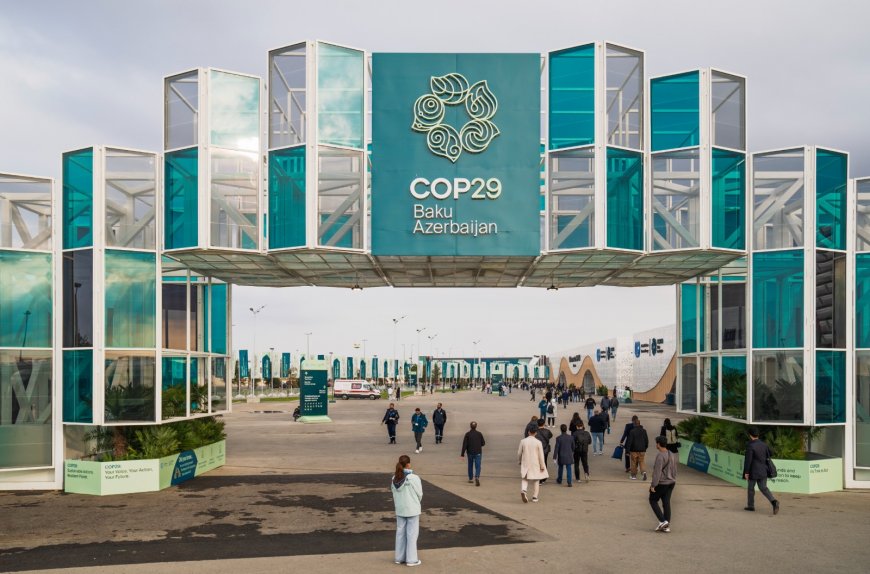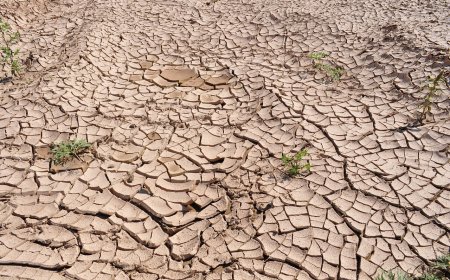Azerbaijan's renewal energy commitment as the COP29 host
Azerbaijan is known as a leading place for fossil energy exploration.

MOSAIC-INDONESIA.COM, JAKARTA -- Azerbaijan, a country which is located between Russia and Iran, is hosting the largest UN climate conference, the 29th Committee of Parties (COP) held in the capital city of Baku, starting in the second week of November.
At least, there are 80 nation leaders review some ways to avoid the real threat of climate change which increased rapidly. As one of the world's largest fossil energy producing countries, Azerbaijan claims to be developing renewable energy potential. It is a key part of the country's plan to reduce greenhouse gas emissions by 40% by 2050.
The country intends to increase its renewable energy capacity by 30% by 2030 and diversify its existing energy system to become a leader in green energy. Azerbaijan also claims to update its national targets in the next National Determined Contribution (NDC) 1.5.
Some of Azerbaijan's renewable energy potential included in the COP29 campaign materials include wind energy. The country claims to have economic potential with a power plant that could generate 3 GW from onshore wind as well as 157 GW from offshore wind. The potential is considered to provide significant opportunities for sustainable power generation.
Significant steps have been taken to realise this potential, with important projects partnering with companies such as ACWA Power and Masdar already under way.
Energy from hydropower is also claimed to have accounted for about 10% of the country's domestic annual electricity generation. About 25% of the country's freshwater resources are concentrated in the Karabakh and East Zangazur regions, making hydropower an important part of achieving the Net Zero 2050 target in the established Green Energy Zone. The main infrastructure of Azerbaijan's hydropower is Mingachevir Hydroelectric Power Plant, which has an installed capacity of 424 MW.
Azerbaijan also claimed to have an economic potential of up to 23 GW of solar energy. The region's supportive climate, with 2,400-3,200 hours of sunshine annually, gives Azerbaijan a strong potential as a producer of solar energy.
In October, Garadagh Solar Power Station with a capacity of 230 MW was inaugurated. Several other projects are underway, and the country continues to sign agreements with stakeholders interested in solar energy.
Along with expanding its solar energy infrastructure, Azerbaijan is working with partners from the public and private sectors, including businesses and multilateral development banks - stakeholders who are at the heart of negotiations at COP29.
Not only that, Azerbaijan began exploring low-carbon hydrogen production in February 2023 with support from the European Bank for Reconstruction and Development (EBRD). Collaboration agreements signed with global private sector actors will allow the development of about 10 GW of renewable energy in the medium term that can contribute to hydrogen production.
Fossil energy still highlighted
Despite its myriad renewable energy potential, this small country in the South Caucasus is known as a major exploration site for fossil energy. The Associated Press notes that Baku was the world's first oil field developed in 1846. Azerbaijan led the world in oil production in 1899. Today, almost all of Azerbaijan's exports are oil and gas, the two main sources of carbon dioxide emissions that cause global warming. In Baku, fossil fuel sites appear in various places.
The AP reported that inside the metal cages next to the sports grounds of the Azerbaijan Aquatic Palace were pump machines. a sign said that these machines suck more than 2 tons of oil per day. Other pumps are working elsewhere, siphoning oil at one of Baku's religious and tourist sites, the Aunt Heybat mosque that was rebuilt in the 1990s after being destroyed by the Bolsheviks nearly 80 years ago.

Analysis from Global Witness, a nonprofit organization, found that the volume of gas burned at oil and gas facilities in Azerbaijan increased 10.5% since 2018. Gas combustion is a major source of soot, carbon dioxide, and methane emissions that contribute to global warming. This happens when energy companies burn excess gas instead of capturing it when it is released while drilling for oil.
Human rights groups and investigative journalists revealed that the exploration had an impact on several health problems of Azerbaijanis, including around the Sangachal terminal. “We're heading into a COP where even the hosts won't bother to perform the basic functions of climate diplomacy,” Louis Wilson, head of fossil fuel investigations at Global Witness, told the AP.
President Ilham Aliyev described fossil energy in his country in April as a God given. Aliyev said that hosting the conference was a “great honor” for Azerbaijan. He also said he wants his country to use more renewable energy domestically in order to export more oil and gas abroad.
Aliyev said he considered it a “mark of respect” from the international community that Azerbaijan hosted the COP and recognition of what Azerbaijan is doing in terms of environmentally friendly energy.
Some of those plans involve developing hydroelectric, solar and wind power projects in Karabakh, a region inhabited by ethnic Armenians who were displaced to Armenia after a lightning military offensive by Azerbaijan in September 2023.
During his speech in March, Aliyev believed his country was in an “active phase of green transition” but added that “no one can ignore the fact that without fossil fuels, the world cannot develop, at least in the foreseeable future.”
Mukhtar Babayev, Azerbaijan's Environment Minister and a former vice president at state energy company Socar, will chair a conference at the talks. Babayev said in April that he wanted to show the world that this “oil and gas state of the past” could show the world a green path with its efforts to boost renewable energy, especially wind power.
He said that he believed the COP summit should build on last year's agreement to transition away from fossil fuels and pave the way for countries to unite by 2025 on a strengthened and funded plan to reduce greenhouse effects.







